Many variables interfere with coffee roasting, from the bean origin to the roast profile. Even so, flaws can occur in the roasting process, causing problems like off-flavors or astringency in the brewed coffee.
Today we’re looking at the most common coffee roast defects and how to fix them.
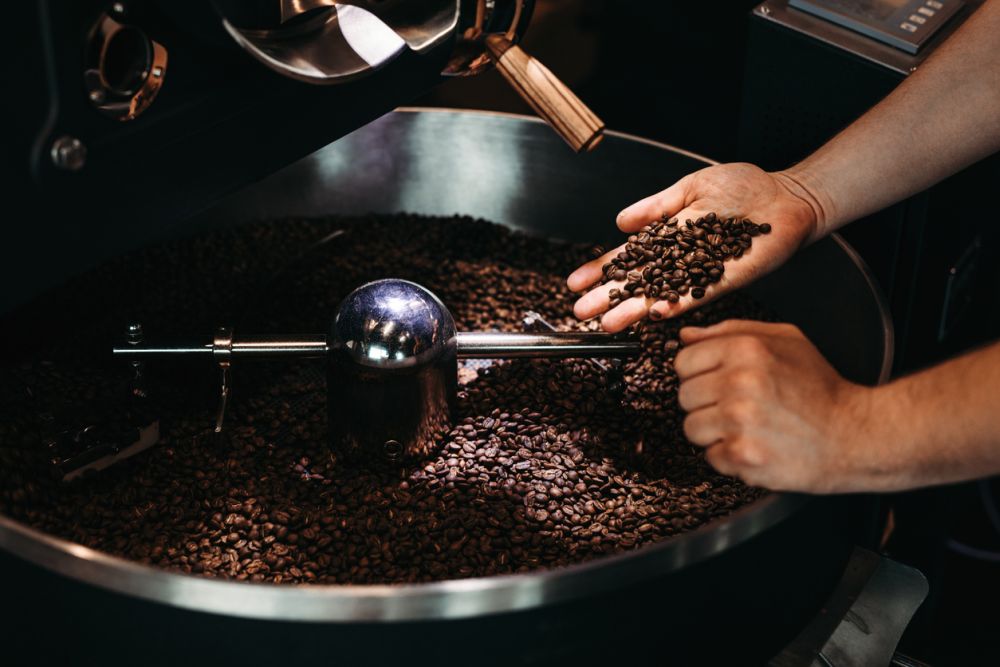
As we know, coffee is made from roasted coffee beans. And the art of roasting coffee has been perfected over centuries, which shows in the quality of the finished product.
Unfortunately, the roasting process doesn’t always go smoothly, especially when using improvised equipment or lacking any roasting experience.
Table of Contents
- The basics of coffee roasting
- Light and dark roast coffee
- What is a roast defect?
- Common coffee roast defects
- How to identify coffee roast defects
- How to prevent coffee roast defects
- Other issues caused by coffee roast defects
- Best coffee roasting machines
- FAQ
- Conclusion
Some defects can occur during the process, often ruining the coffee and making it unfit for consumption.
In this article, we are discussing the most common coffee roast defects and ways to avoid them.
The Basics of Coffee Roasting
Coffee is roasted to transform the chemical and physical properties of the green coffee beans, giving off that signature coffee flavor while brewing.
To get the best possible taste, green coffee beans are usually roasted as close to the consumption time as possible since they are more stable in their raw green form.
While roasting, coffee beans lose around 15% of their mass due to the evaporation of water and volatile compounds. It’s what causes the coffee beans to expand – the more they are roasted, the more they expand.
Light and Dark Roast Coffee

There are currently two main roast levels used in coffee production – light and dark.
Light roasts are processed at 196° C (385° F). And many specialists say that the beans reach a light roast when hearing the first crack.
Meanwhile, dark roasts are processed at 224° C (435° F). In this case, you should stand by for the second crack.
During roasting, all the fats get melted and turned into oils, which are pushed to the surface by the pressure steam exiting the beans; dark roasts have more oils than light ones.
The easiest way to tell the roast is by the bean’s color. Other factors include the smell, amount of oil on the beans, and cracking sounds.
What is a Roast Defect?
If you ever made popcorn, you know that no matter how much you try, you never seem to manage to pop all the kernels. And if you do, some will end up burnt.
The same thing applies to coffee beans. Most roast defects occur due to too much or too little heat used at various stages of the roasting process (yes, it varies).
The good news is that roasting defects are almost always caused by human error, which means you can learn how to do it correctly and avoid such issues.
For example, beans that are seemingly roasted on the outside are raw on the inside and have a grassy taste – it means they were roasted too quickly.
On the other hand, roasting the beans for too long turns them charcoal black, so they are unfit for consumption since they lack any flavor.
Common Coffee Roast Defects
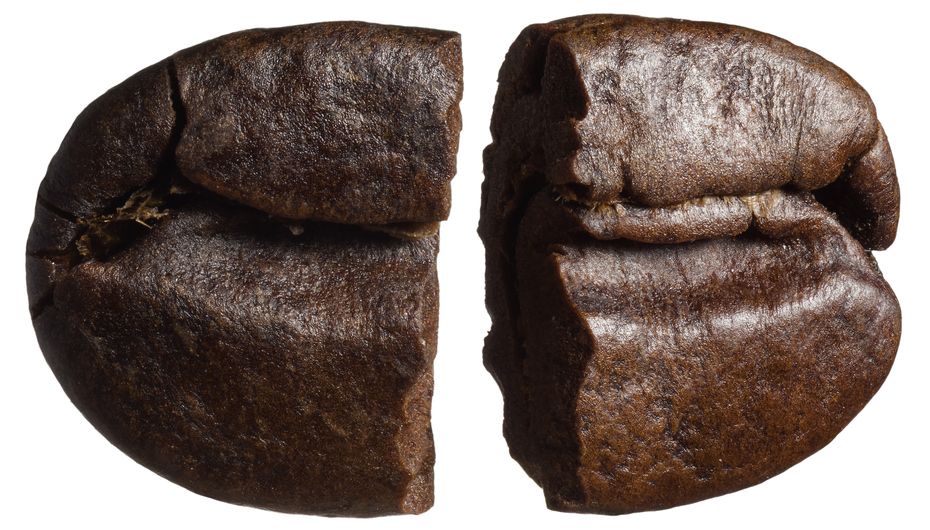
Now that we know what roast defects are and what causes them, it’s time to take a look at some of the most common ones:
1. Scorched Beans
- They appear when the coffee roaster sets the initial temperature too high while setting the drum speed too low.
- The flat sides are usually burnt away while the topsides are only lightly roasted or not roasted at all.
- As for the taste, you simultaneously feel burnt and raw green coffee beans.
- Fix the issue by lowering the charging temperature.
- Also, ensure that the drum’s rotation speeds allow equal heat distribution.
- Remove the scorched beans from the batch (cheap coffee manufacturers don’t do this).
2. Tipped Beans
- They are similar to scorched beans since they are also caused by high initial temperatures and low drum rotation speeds. But only the bean tips are slightly scorched.
- Since it affects a tiny part of the bean, it doesn’t noticeably change the coffee flavor.
- Tipped beans tend to give your coffee a smoky and oily flavor, depending on how severe the defect was.
3. Chipped Beans
- As discussed earlier, roasted coffee goes through one or two cracking phases. Normally, the water evaporates and splits the bean down the middle, giving them their signature look.
- However, sometimes the beans simply can’t handle the pressure from the cracking. And some even start chipping apart.
- Chipped beans are easy to spot since they have missing chunks, with a round black scorched spot in place of the missing piece.
- They are most common in dark roasts because the beans are already brittle when they reach the second crack.
- The brew’s flavor won’t be too affected unless most of the beans are chipped. In that case, you will feel a smoky or slightly burnt aftertaste.
4. Baked Beans
- Think of baked coffee beans as the opposite of scorched coffee beans. But they are harder to identify – the surefire way is checking the taste.
- Beans get baked due to over-roasting before the first crack or because of sudden temperature changes.
- They lose most of their flavors, creating a yeast- or oat-like taste. Other people describe it as bland, papery, and overall flat.
- Unfortunately, there’s not much you can do about baked beans. Just keep practicing to get the roasting right – the initial temperature should be high enough to cause the bean cracking quickly.
5. Quakers
- Quakers are unripened coffee beans that passed inspection when selecting the green coffee beans.
- Unfortunately, they look so much like ripe coffee beans that they’re often mixed in, so telling them apart is quite hard.
- Many coffee roasters claim that roasted unripe coffee beans have a significantly lighter color than the rest of the batch.
- You can also check by tasting the beans since quackers are typically dry, bland, and even papery.
- Remove as many quakers as you can.
6. Underdeveloped Beans
- They haven’t been roasted long enough, so they lack any signature-roasting aromas.
- Green coffee contains many simple sugars that, when roasted, go through several chemical changes, such as caramelization.
- Very low temperatures slow down or stop caramelization occurs, causin a grassy taste in green beans.
- Underdeveloped beans usually appear when the plan is to make light roasts but there’s not enough patience until the first crack.
7. Overdeveloped Beans
- They have been roasted for too long at very high temperatures.
- It’s difficult to tell apart overdeveloped coffee beans from dark roasts, especially if prefer dark blends, such as French or Italian roasts.
- Dark or overdeveloped roasts produce a burnt and bitter taste when compared to light or medium roasts, but some like it that way.
- It comes down to finding the right balance of temperature and roasting time while also considering the preferred coffee taste.
- If your coffee beans are charcoal black and taste like burnt bread, there’s no doubt they’re overdeveloped.
How to Identify Coffee Roast Defects
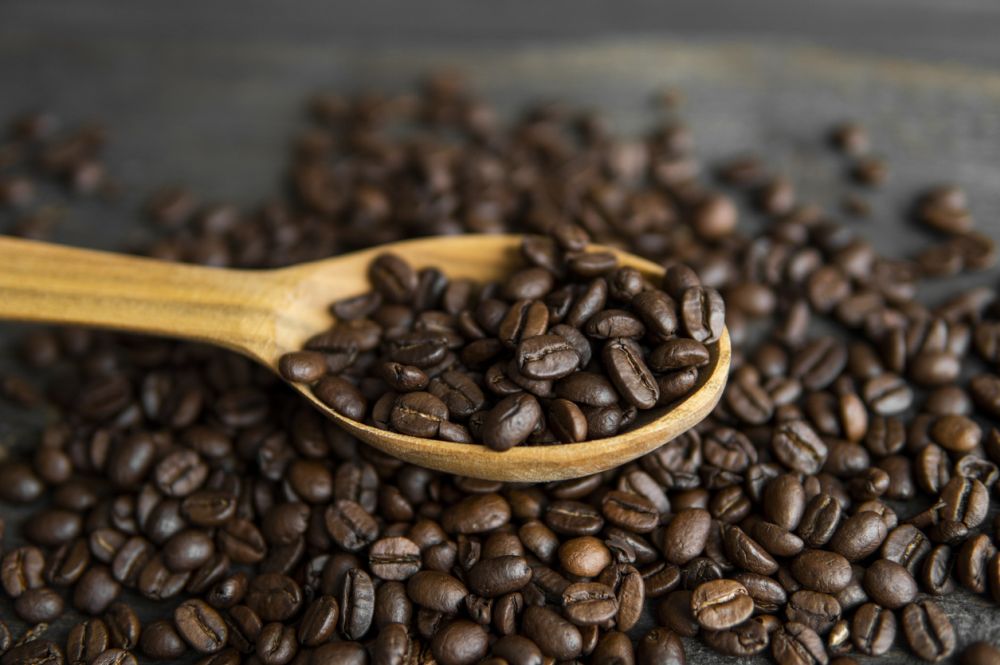
There are plenty of ways to identify coffee beans with roasting defects, although the best methods require experience and going through trial and error:
By Color
Underdeveloped and overdeveloped coffee beans have a specific color that makes them easy to identify.
Underdeveloped beans are significantly lighter while overdeveloped ones are darker than the rest of the batch.
Additionally, overdeveloped coffee beans are shinier since all their oils sit on the surface.
By Cupping
Cupping means to identify any potential defects by smelling and tasting coffee. It’s practiced by coffee roasters who want to make sure their coffee beans are up to par, and it’s the best method to identify roasting defects.
Underdeveloped coffee beans have a much brighter taste and no inherent sweetness due to the lack of caramelization.
Besides, since they’re not roasted properly, they won’t be as soluble when ground. So your coffee will look broken up, watery, and without a uniform color.
On the other hand, overdeveloped coffee tastes smoky or even completely burnt, resulting in an overwhelming mouthfeel.
How to Prevent Coffee Roast Defects
Preventing roasting defects starts before firing up the roaster.
Keep an eye on your coffee beans from the moment they arrive at your roasting facility.
A good practice is to inspect each batch of green coffee beans for unripe beans, preventing quakers.
Next, a reliable thermometer can tell you exactly when the first and second cracks occur – and how long it lasted.
This way, you’ll get a better feel of when to stop the roasting process and achieve perfect results every time.
Plua, you can use specialized equipment to measure the roasting consistency, making it easier to fine-tune your coffee roasters and obtain specific results.
Other Issues Caused by Coffee Roast Defects
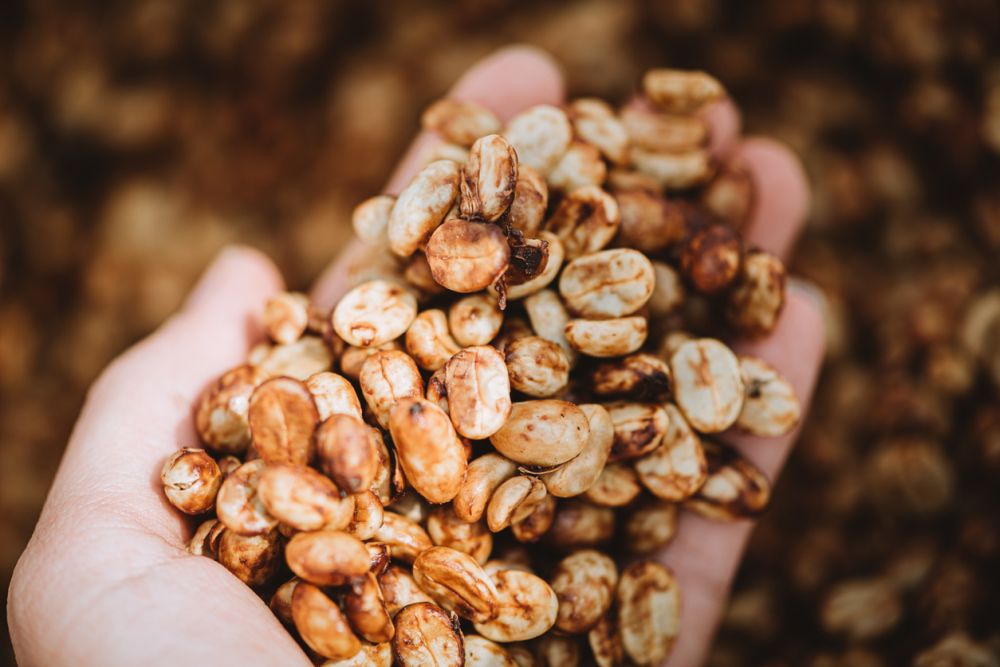
Your roasted coffee beans are only as good as the green beans they came from. Sometimes you can obtain roasting defects due to issues with the green beans:
Broken Beans
Somewhere between harvesting and roasting, some of your coffee beans may be broken or crumbled into smaller pieces – think of them as chipped, but before roasting begins.
Since roasting machines are calibrated to roast whole coffee beans, the fractured beans will roast faster and burn even if your machine was set to light or medium roast.
Unless these burnt pieces are removed, you’ll end up with a roasted coffee with an unbalanced flavor, similar to scorched or overly tipped beans.
Damage from Pests
It’s not uncommon for coffee beans to have holes and other damage caused by pests. They can affect the beans while growing or in storage right before roasting.
Like the broken beans mentioned earlier, these will roast a lot faster and eventually burn to a crisp, giving your coffee a bitter and unpleasant taste.
Bonus: Best Coffee Roasting Machines
Roasting coffee beans at home has become increasingly popular, with many users taking to social media to share their roast results.
While you can technically roast coffee beans in any type of oven (popcorn maker, stovetop pan), getting good results is tricky to say the least.
This is why many coffee enthusiasts recommend getting a dedicated coffee roaster. Here are the best ones:
- Fresh Roast SR540
- BAR WELL Coffee Bean Roaster
- LUEUR Electric Coffee Roaster Machine
- Nuvo Eco Ceramic Handy Coffee Bean Roaster
- Mochiglory Rotisserie Basket Coffee Bean Roaster Drum
FAQ
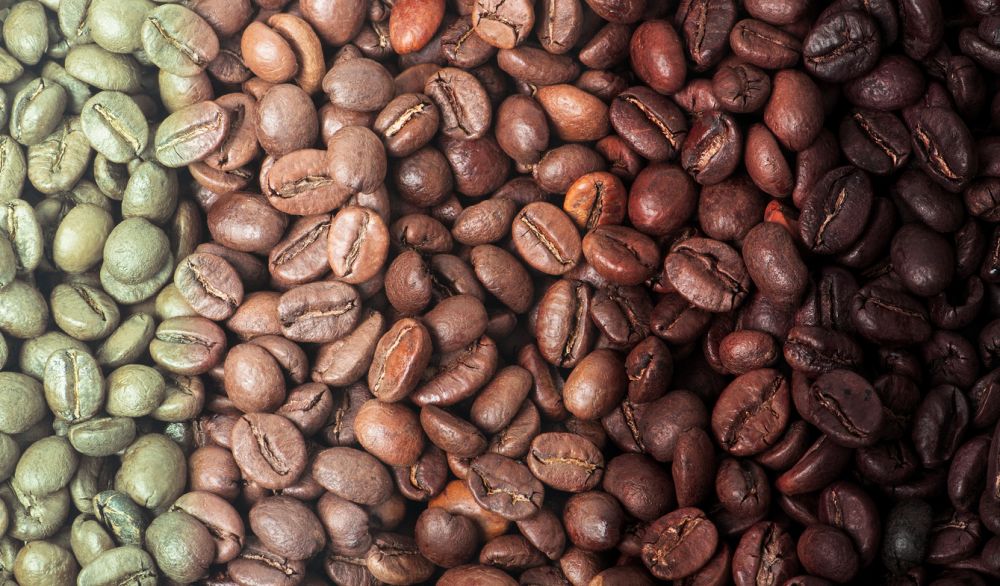
Learn more info about coffee roast defects:
What are the common problems that occur when roasting?
The most common problems are scorched, chipped, tipped, baked, overdeveloped or underdeveloped beans, or quakers.
How does roast affect coffee?
Roasting changes the color, taste, aroma, and acidity of coffee beans.
The final roast level you choose will depend on your preferences: light roasts have a brighter and more acidic taste, while dark roasts are fuller-bodied and richer in flavor.
What causes tipping in coffee roasting?
Tipping usually occurs when the initial roasting temperature inside the coffee roasting machine is too high, resulting in beans with burnt tips.
What is a quaker coffee bean?
Quaker coffee beans are beans that failed to develop properly during the roasting process – usually because they were not ripe to begin with.
As a result, these beans will have no taste. And they will be much lighter in color than the rest of the batch.
How do you know if coffee beans are burnt?
Burnt coffee beans are easy to identify since the entire coffee bean, or just a portion of it, has a charcoal-black color.
Conclusion
We hope this article has given you a better understanding of what can go wrong during the roasting process and how to avoid it.
Feel free to experiment with different roast levels and brewing methods to find the combination that suits your taste buds the best.
Happy roasting!
Leave a Reply